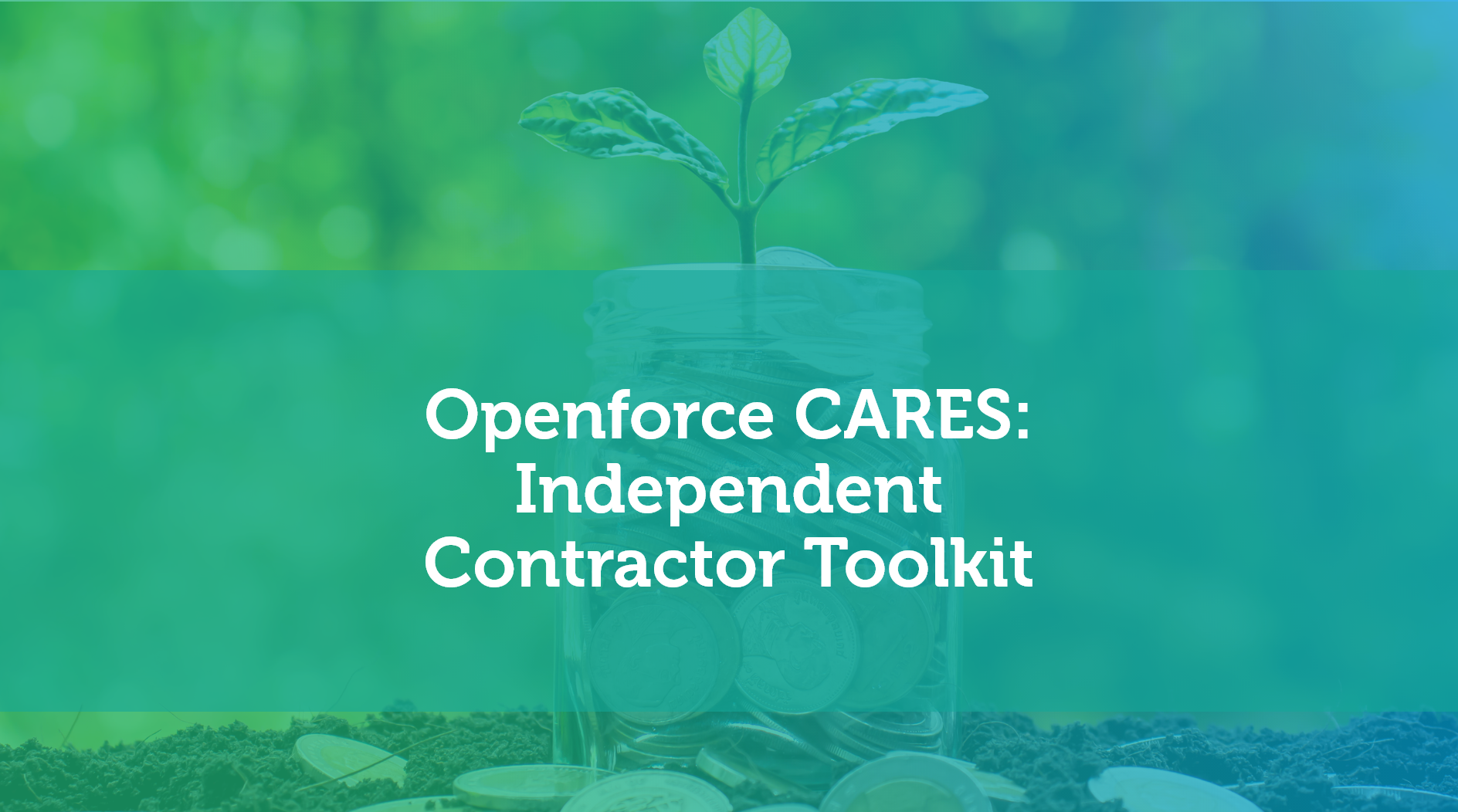Openforce CARES:
Independent Contractor Toolkit
Your guide to finding financial relief during COVID-19
The coronavirus pandemic is hitting the U.S. economy hard. And whether you call yourself an independent contractor (IC), owner-operator, gig worker or sole proprietor, as a self-employed individual you may be struggling right now and
looking for help.
But—for the first time ever—new emergency legislation gives independent contractors and other self-employed individuals access to significant benefits programs and financial assistance unavailable to than traditional employees. As a member of the Openforce independent contractor platform community, Openforce is supplying you with the helpful information in this toolkit to allow you to take advantage of as many of these benefits as possible.
What these laws do
The massive Coronavirus Aid, Relief and Economic Security (CARES) Act provides over $2 trillion in relief to American families and businesses. As an independent contractor you may qualify for a wide variety of relief options, such as loans (that may be forgiven in whole or in part), grants, unemployment benefits, deferred taxes and more. At the same time, the Families First Coronavirus Response Act (FFCRA) enables independent workers to access a form of emergency paid leave. Keep reading for a breakdown of these benefits and how they might help you.
Benefits guide
We want to help, so keep checking back
As difficult as things are right now, the current crisis has made the vital role that independent workers play in the economy more visible. Thankfully, that means there is more relief available for independent contractors and the self-employed than ever before—and it includes options (like the loans and advances) that aren’t available to traditional employees.
Over the next few weeks, we will continue to update this page as the government releases new guidelines about each of these programs, so keep checking back. We’re committed to making sure you have the information you need.
Legal Disclaimer
Openforce provides general information and industry guidance related to solutions and services for independent contractor workforces. Openforce does not provide legal advice and is not a law firm. While we may have former lawyers and other legal specialists on staff, none of our representatives are licensed lawyers and no one at Openforce provides legal services. Although we go to great lengths to make sure our information is accurate and useful, we always recommend you consult a lawyer for legal advice or business/tax advisor for applicable business assistance.
About Openforce
Openforce is the leader in technology-driven services that reduce operating costs and mitigate risk for companies using independent contractors. Our cloud-based applications help companies and contractors alike achieve more sustainable, profitable growth by removing financial, operational, and compliance barriers to getting business done.

